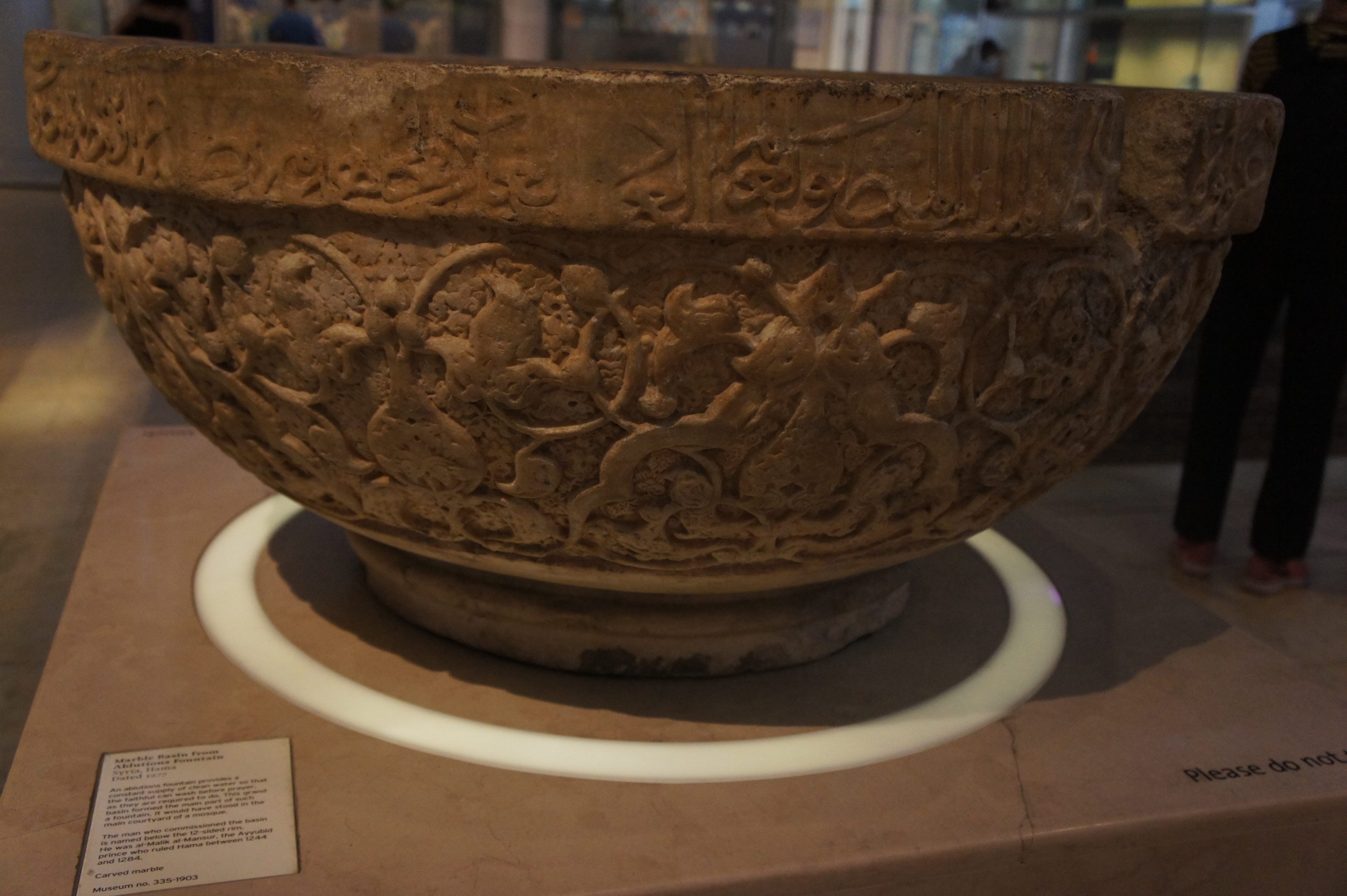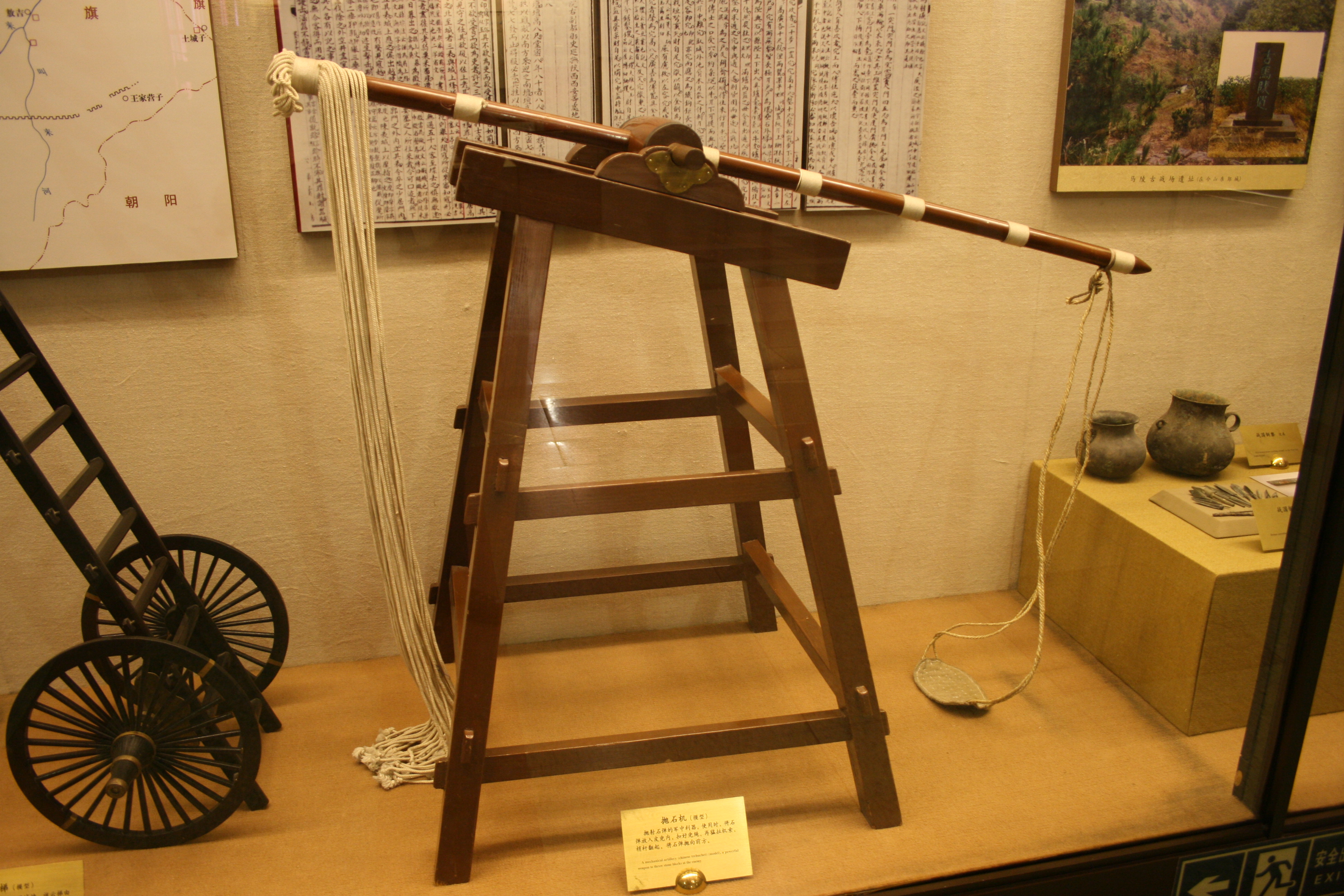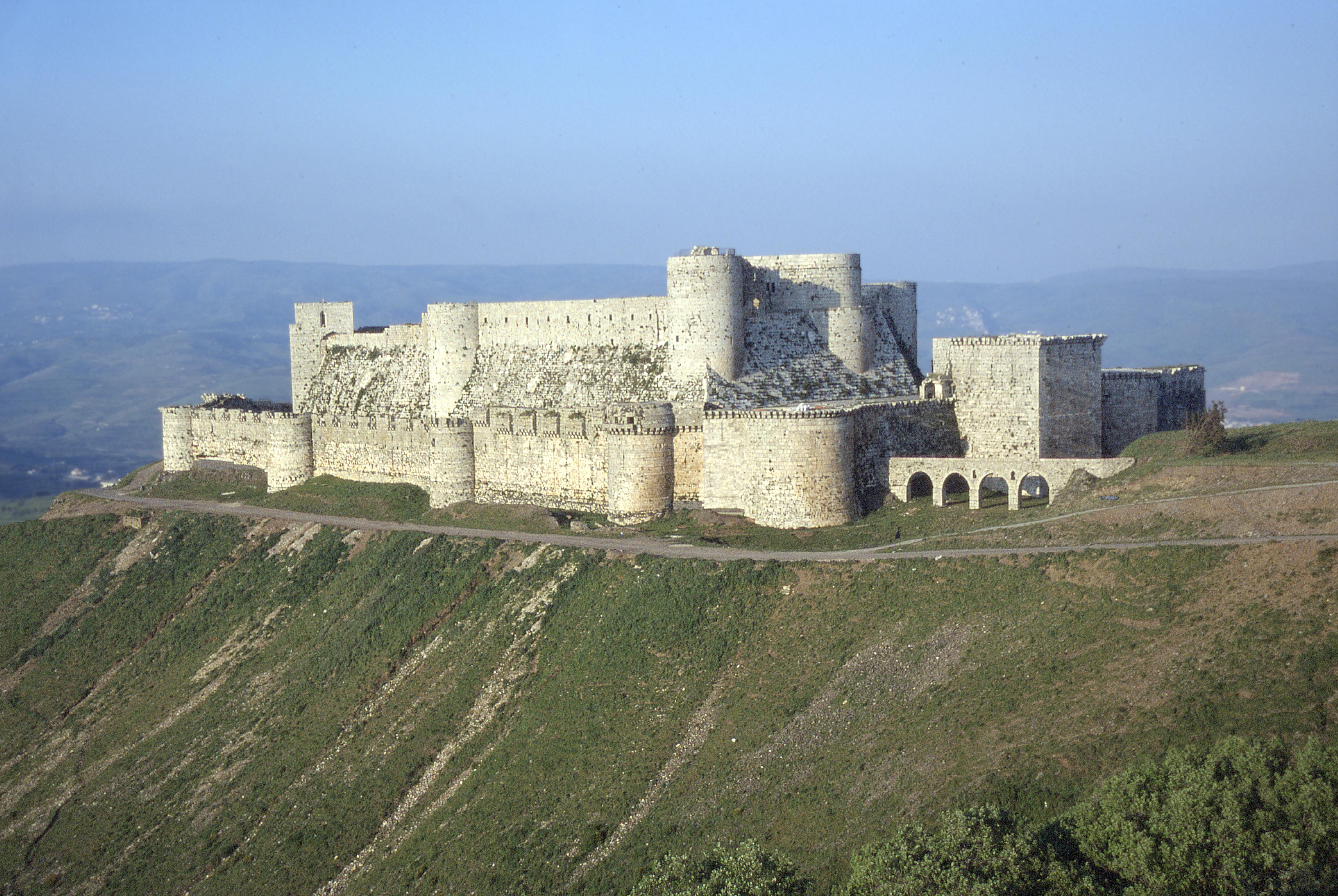|
Al-Muzaffar III Mahmud
Al Muzaffar III Mahmud was the Ayyubid emir of Hama from 1284–1300. He was the son of Al-Mansur Muhammad II whom he succeeded. Hama was at this time a tributary emirate of the Mamluk Sultanate. Biography Al Muzaffar took part in the siege of Acre in 1291, bringing a large mangonel from Krak des Chevaliers Krak des Chevaliers, ar, قلعة الحصن, Qalʿat al-Ḥiṣn also called Hisn al-Akrad ( ar, حصن الأكراد, Ḥiṣn al-Akrād, rtl=yes, ) and formerly Crac de l'Ospital; Krak des Chevaliers or Crac des Chevaliers (), is a medieva ... to support the assault on the city. Although a few small Crusader enclaves survived, the fall of Acre marked the end of the Crusader period in Syria and thereafter Mamluks rule was unchallenged. When he died in 1300 Hama was briefly under direct Mamluk rule, but in 1310 Al Muzaffar’s cousin Abu'l-Fida was made emir, and there was a final period of Ayyubid tributary rule in the city.Khair T., Leer M., Edwards J.D. and Zi ... [...More Info...] [...Related Items...] OR: [Wikipedia] [Google] [Baidu] |
Hama
, timezone = EET , utc_offset = +2 , timezone_DST = EEST , utc_offset_DST = +3 , postal_code_type = , postal_code = , area_code = Country code: 963 City code: 33 , geocode = C2987 , blank_name = Climate , blank_info = BSk , website = , footnotes = , name = Hama ( ar, حَمَاة ', ; syr, ܚܡܬ, ħ(ə)mɑθ, lit=fortress; Biblical Hebrew: ''Ḥamāṯ'') is a city on the banks of the Orontes River in west-central Syria. It is located north of Damascus and north of Homs. It is the provincial capital of the Hama Governorate. With a population of 854,000 (2009 census), Hama is the fourth-largest city in Syria after Damascus, Aleppo and Homs. The city is renowned for its sev ... [...More Info...] [...Related Items...] OR: [Wikipedia] [Google] [Baidu] |
Al-Mansur Muhammad II
Al-Mansur II Muhammad was the Ayyubid emir of Hama 1244–1284, son of al-Muzaffar II Mahmud and grandson of al-Mansur I Muhammad. He was the great-great grandson of Saladin’s brother Nur ad-Din Shahanshah. His mother was Ghaziya Khatun. Early years Al Mansur came to the throne at a time when the Egyptian Sultan As-Salih Ayyub was consolidating his power. In spring 1247 As-Salih Ayyub set out for Syria where he met emir Al-Ashraf Musa of Homs as well as Al Mansur. Both were young - Al-Ashraf Musa was eighteen and Al Mansur was just twelve - and new on their thrones. As-Salih Ayyub campaigned against his rival An-Nasir Yusuf of Aleppo but returned to Egypt to confront a new Crusader threat in 1249. Shortly afterwards he died. His son and successor Al-Muazzam Turanshah did not long outlive him and in 1250 the Ayyubid dynasty was overthrown in Egypt by the Bahri mamluks. Threats from Mamluks and Mongols The effect of this coup in Egypt was to make An-Nasir Yusuf of Aleppo ... [...More Info...] [...Related Items...] OR: [Wikipedia] [Google] [Baidu] |
Abu'l-Fida
Ismāʿīl b. ʿAlī b. Maḥmūd b. Muḥammad b. ʿUmar b. Shāhanshāh b. Ayyūb b. Shādī b. Marwān ( ar, إسماعيل بن علي بن محمود بن محمد بن عمر بن شاهنشاه بن أيوب بن شادي بن مروان), better known as Abū al-Fidāʾ ( ar, أبو الفداء, Latinized Abulfeda; November 127327 October 1331), was a Mamluk-era geographer, historian, Ayyubid prince and local governor of Hama. The crater Abulfeda on the Moon is named after him. Life Abu'l-Fida was born in Damascus, where his father Malik ul-Afdal, brother of Emir Al-Mansur Muhammad II of Hama, had fled from the Mongols. Abu'l-Fida was an Ayyubid prince, thus of Kurdish origin. In his boyhood he devoted himself to the study of the Qur'an and the sciences, but from his twelfth year onward, he was almost constantly engaged in military expeditions, chiefly against the crusaders. In 1285 he was present at the attack on a stronghold of the Knights of St. John, and too ... [...More Info...] [...Related Items...] OR: [Wikipedia] [Google] [Baidu] |
Ayyubid Dynasty
The Ayyubid dynasty ( ar, الأيوبيون '; ) was the founding dynasty of the medieval Sultan of Egypt, Sultanate of Egypt established by Saladin in 1171, following his abolition of the Fatimid Caliphate, Fatimid Caliphate of Egypt. A Sunni Muslim of Kurds, Kurdish origin, Saladin had originally served Nur ad-Din (died 1174), Nur ad-Din of Syria, leading Nur ad-Din's army in battle against the Crusaders in Fatimid Egypt, where he was made Vizier. Following Nur ad-Din's death, Saladin was proclaimed as the first Sultan of Egypt, and rapidly expanded the new sultanate beyond the frontiers of Egypt to encompass most of the Levant (including the former territories of Nur ad-Din), in addition to Hijaz, Yemen, northern Nubia, Tripolitania, Tarabulus, Cyrenaica, southern Anatolia, and northern Iraq, the homeland of his Kurdish family. By virtue of his sultanate including Hijaz, the location of the Islamic holy cities of Mecca and Medina, he was the first ruler to be hailed as the Cus ... [...More Info...] [...Related Items...] OR: [Wikipedia] [Google] [Baidu] |
Sunni Islam
Sunni Islam () is the largest branch of Islam, followed by 85–90% of the world's Muslims. Its name comes from the word '' Sunnah'', referring to the tradition of Muhammad. The differences between Sunni and Shia Muslims arose from a disagreement over the succession to Muhammad and subsequently acquired broader political significance, as well as theological and juridical dimensions. According to Sunni traditions, Muhammad left no successor and the participants of the Saqifah event appointed Abu Bakr as the next-in-line (the first caliph). This contrasts with the Shia view, which holds that Muhammad appointed his son-in-law and cousin Ali ibn Abi Talib as his successor. The adherents of Sunni Islam are referred to in Arabic as ("the people of the Sunnah and the community") or for short. In English, its doctrines and practices are sometimes called ''Sunnism'', while adherents are known as Sunni Muslims, Sunnis, Sunnites and Ahlus Sunnah. Sunni Islam is sometimes referred ... [...More Info...] [...Related Items...] OR: [Wikipedia] [Google] [Baidu] |
Ayyubid
The Ayyubid dynasty ( ar, الأيوبيون '; ) was the founding dynasty of the medieval Sultan of Egypt, Sultanate of Egypt established by Saladin in 1171, following his abolition of the Fatimid Caliphate, Fatimid Caliphate of Egypt. A Sunni Muslim of Kurds, Kurdish origin, Saladin had originally served Nur ad-Din (died 1174), Nur ad-Din of Syria, leading Nur ad-Din's army in battle against the Crusaders in Fatimid Egypt, where he was made Vizier. Following Nur ad-Din's death, Saladin was proclaimed as the first Sultan of Egypt, and rapidly expanded the new sultanate beyond the frontiers of Egypt to encompass most of the Levant (including the former territories of Nur ad-Din), in addition to Hijaz, Yemen, northern Nubia, Tripolitania, Tarabulus, Cyrenaica, southern Anatolia, and northern Iraq, the homeland of his Kurdish family. By virtue of his sultanate including Hijaz, the location of the Islamic holy cities of Mecca and Medina, he was the first ruler to be hailed as the Cus ... [...More Info...] [...Related Items...] OR: [Wikipedia] [Google] [Baidu] |
Mamluk Sultanate (Cairo)
The Mamluk Sultanate ( ar, سلطنة المماليك, translit=Salṭanat al-Mamālīk), also known as Mamluk Egypt or the Mamluk Empire, was a state that ruled Egypt, the Levant and the Hejaz (western Arabia) from the mid-13th to early 16th centuries. It was ruled by a military caste of mamluks (manumitted slave soldiers) headed by the sultan. The Abbasid caliphs were the nominal sovereigns. The sultanate was established with the overthrow of the Ayyubid dynasty in Egypt in 1250 and was conquered by the Ottoman Empire in 1517. Mamluk history is generally divided into the Turkic or Bahri period (1250–1382) and the Circassian or Burji period (1382–1517), called after the predominant ethnicity or corps of the ruling Mamluks during these respective eras.Levanoni 1995, p. 17. The first rulers of the sultanate hailed from the mamluk regiments of the Ayyubid sultan as-Salih Ayyub (), usurping power from his successor in 1250. The Mamluks under Sultan Qutuz and Baybars ... [...More Info...] [...Related Items...] OR: [Wikipedia] [Google] [Baidu] |
Acre, Israel
Acre ( ), known locally as Akko ( he, עַכּוֹ, ''ʻAkō'') or Akka ( ar, عكّا, ''ʻAkkā''), is a city in the coastal plain region of the Northern District of Israel. The city occupies an important location, sitting in a natural harbour at the extremity of Haifa Bay on the coast of the Mediterranean's Levantine Sea."Old City of Acre." , World Heritage Center. World Heritage Convention. Web. 15 Apr 2013 Aside from coastal trading, it was also an important waypoint on the region's coastal road and the road cutting inland along the |
Mangonel
The mangonel, also called the traction trebuchet, was a type of trebuchet used in Ancient China starting from the Warring States period, and later across Eurasia by the 6th century AD. Unlike the later counterweight trebuchet, the mangonel operated on manpower pulling cords attached to a lever and sling to launch projectiles. Although the mangonel required more men to function, it was also less complex and faster to reload than the torsion-powered onager which it replaced in early Medieval Europe. It was replaced as the primary siege weapon in the 12th and 13th centuries by the counterweight trebuchet. A common misconception about the mangonel is that it was a torsion siege engine. Etymology ''Mangonel'' is probably derived from the Greek ''mangana'', "a generic term for construction machinery." It could also be derived from ''mangon'', a French hard stone found in the south of France. In Latin it is called a ''manganum'', in French a ''manganeau'', and in English a ''mangonel ... [...More Info...] [...Related Items...] OR: [Wikipedia] [Google] [Baidu] |
Krak Des Chevaliers
Krak des Chevaliers, ar, قلعة الحصن, Qalʿat al-Ḥiṣn also called Hisn al-Akrad ( ar, حصن الأكراد, Ḥiṣn al-Akrād, rtl=yes, ) and formerly Crac de l'Ospital; Krak des Chevaliers or Crac des Chevaliers (), is a medieval castle in Syria and one of the most important preserved medieval castles in the world. The site was first inhabited in the 11th century by Kurds, Kurdish troops garrisoned there by the Mirdasid dynasty, Mirdasids. In 1142 it was given by Raymond II of Tripoli, Raymond II, County of Tripoli, Count of Tripoli, to the order of the Knights Hospitaller. It remained in their possession until it fell in 1271. The Hospitallers began rebuilding the castle in the 1140s and were finished by 1170 when an earthquake damaged the castle. The order controlled a number of castles along the border of the County of Tripoli, a Crusader state, state founded after the First Crusade. Krak des Chevaliers was among the most important, and acted as a center ... [...More Info...] [...Related Items...] OR: [Wikipedia] [Google] [Baidu] |
1300 Deaths
Thirteen or 13 may refer to: * 13 (number), the natural number following 12 and preceding 14 * One of the years 13 BC, AD 13, 1913, 2013 Music * 13AD (band), an Indian classic and hard rock band Albums * ''13'' (Black Sabbath album), 2013 * ''13'' (Blur album), 1999 * ''13'' (Borgeous album), 2016 * ''13'' (Brian Setzer album), 2006 * ''13'' (Die Ärzte album), 1998 * ''13'' (The Doors album), 1970 * ''13'' (Havoc album), 2013 * ''13'' (HLAH album), 1993 * ''13'' (Indochine album), 2017 * ''13'' (Marta Savić album), 2011 * ''13'' (Norman Westberg album), 2015 * ''13'' (Ozark Mountain Daredevils album), 1997 * ''13'' (Six Feet Under album), 2005 * ''13'' (Suicidal Tendencies album), 2013 * ''13'' (Solace album), 2003 * ''13'' (Second Coming album), 2003 * ''13'' (Ces Cru EP), 2012 * ''13'' (Denzel Curry EP), 2017 * ''Thirteen'' (CJ & The Satellites album), 2007 * ''Thirteen'' (Emmylou Harris album), 1986 * ''Thirteen'' (Harem Scarem album), 2014 * ''Thirtee ... [...More Info...] [...Related Items...] OR: [Wikipedia] [Google] [Baidu] |
13th-century Ayyubid Rulers
The 13th century was the century which lasted from January 1, 1201 ( MCCI) through December 31, 1300 ( MCCC) in accordance with the Julian calendar. The Mongol Empire was founded by Genghis Khan, which stretched from Eastern Asia to Eastern Europe. The conquests of Hulagu Khan and other Mongol invasions changed the course of the Muslim world, most notably the Siege of Baghdad (1258), the destruction of the House of Wisdom and the weakening of the Mamluks and Rums which, according to historians, caused the decline of the Islamic Golden Age. Other Muslim powers such as the Mali Empire and Delhi Sultanate conquered large parts of West Africa and the Indian subcontinent, while Buddhism witnessed a decline through the conquest led by Bakhtiyar Khilji. The Southern Song dynasty would begin the century as a prosperous kingdom but would eventually be invaded and annexed into the Yuan dynasty of the Mongols. The Kamakura Shogunate of Japan would be invaded by the Mongols. Goryeo ... [...More Info...] [...Related Items...] OR: [Wikipedia] [Google] [Baidu] |








